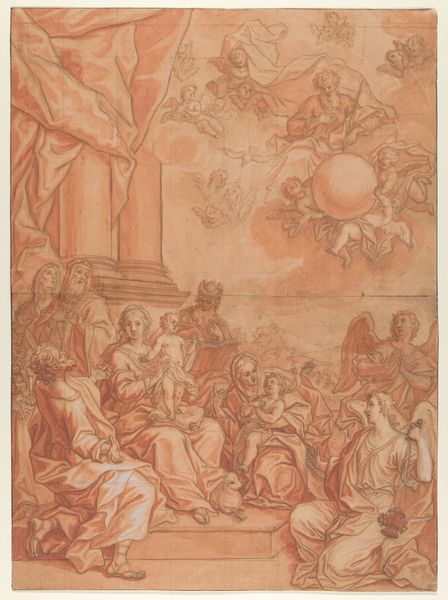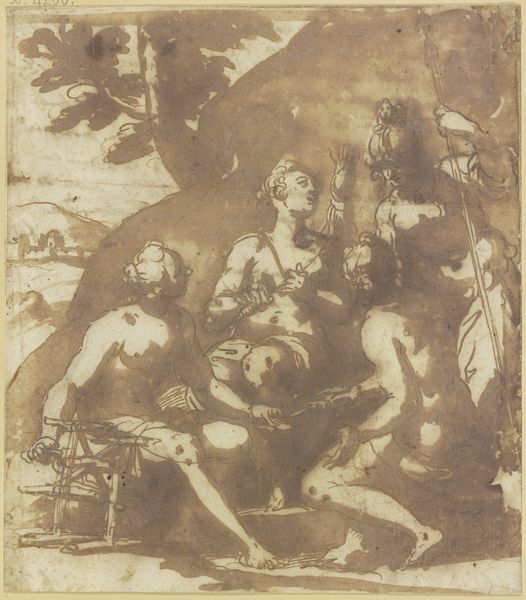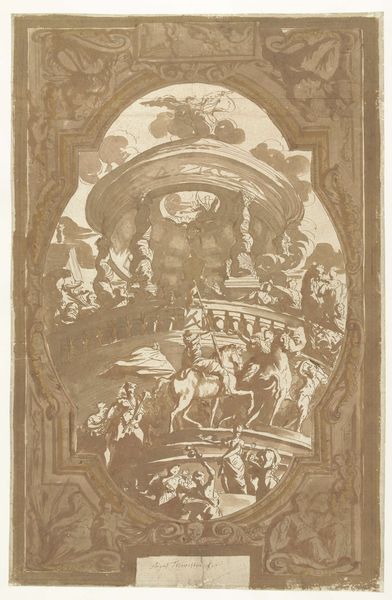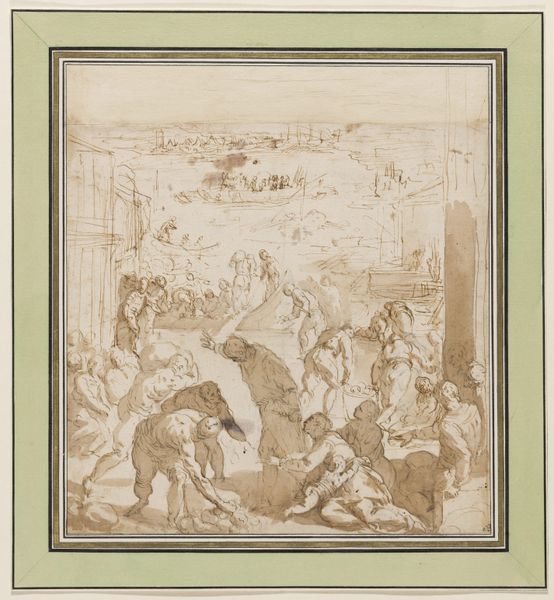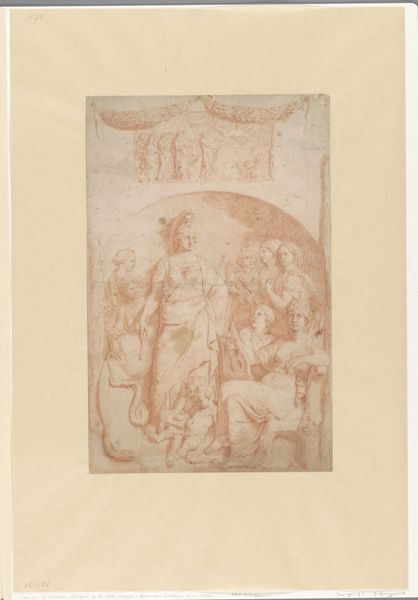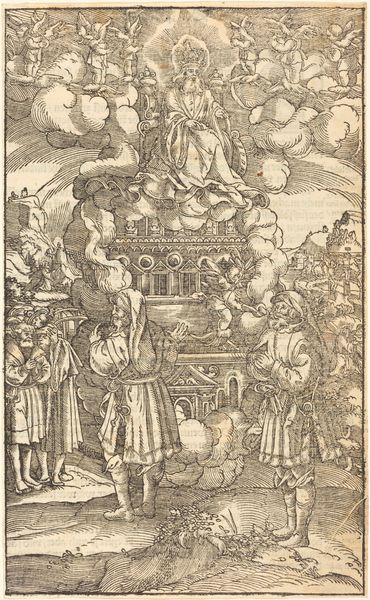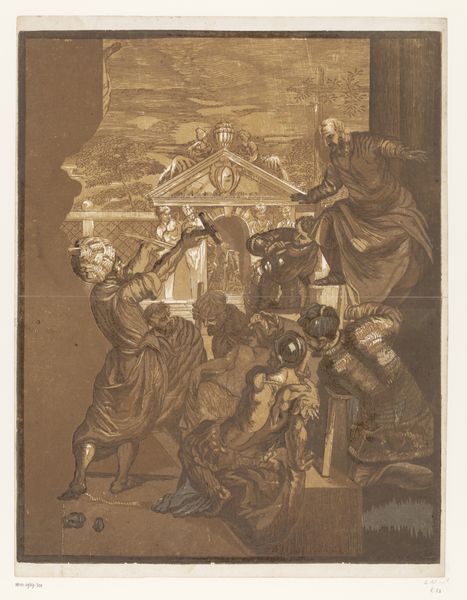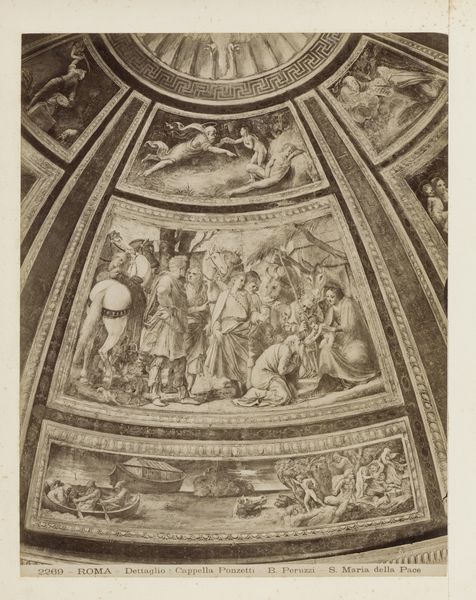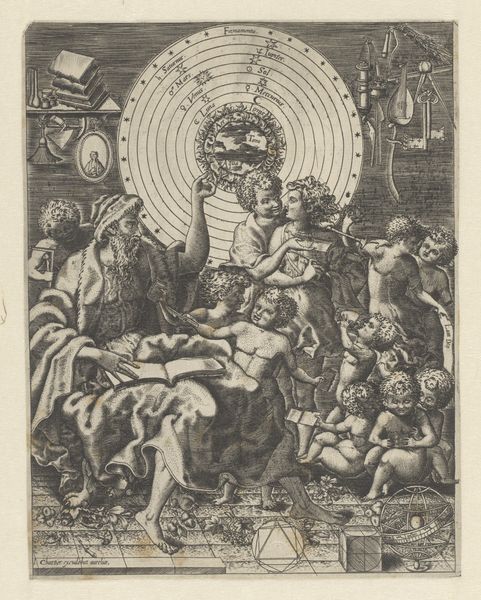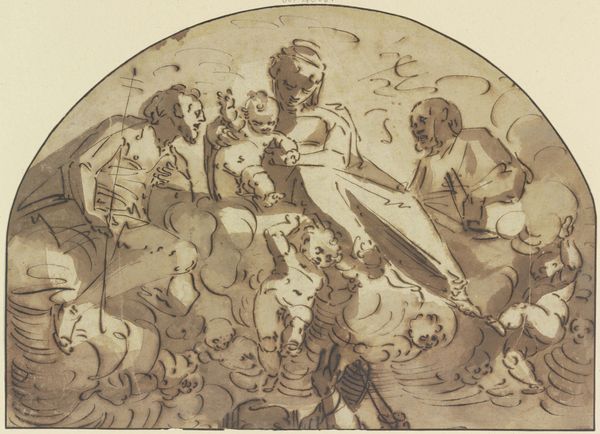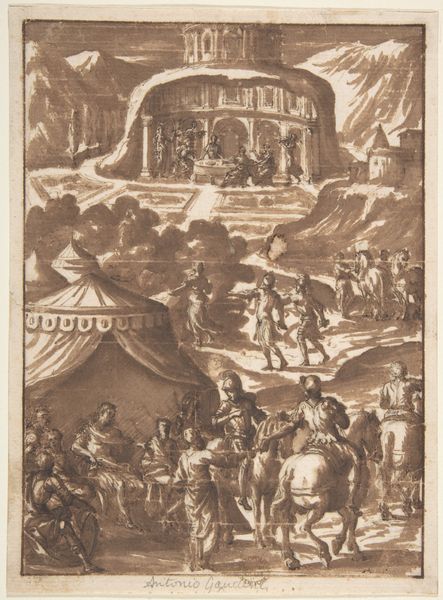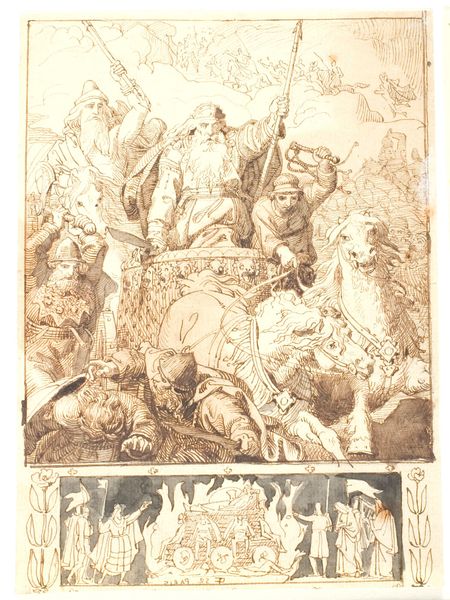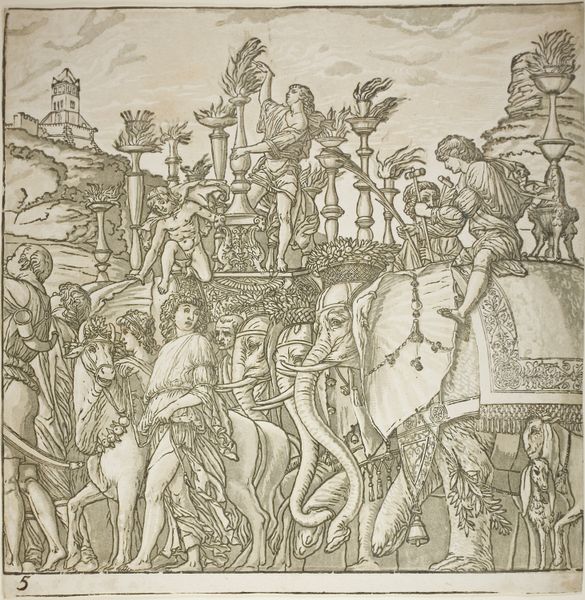
fresco, mural
#
allegory
#
landscape
#
fresco
#
history-painting
#
italian-renaissance
#
mural
Copyright: Public domain
Curator: This mural, titled "April: Fresco in Palazzo Schifanoia," was crafted around 1470 by Francesco del Cossa, offering us a vibrant snapshot into Renaissance court life. Editor: My immediate impression is of segmented dreamscape—those tiered layers feel spatially disconnected yet thematically linked through some esoteric logic. The colours, despite the fresco medium, are remarkably well preserved, particularly that vivid cerulean in the upper register. Curator: The entire cycle of frescoes was commissioned by the Este family, rulers of Ferrara, and each month represented in the series illustrates both the zodiac sign and the activities associated with that period, interwoven with allegorical figures. April, here, reflects themes of love, fertility, and springtime renewal, aligning with the sign of Taurus. Editor: Semiotically, that zodiac reference is powerfully articulated through Taurus's iconic representation as a bull, ridden by a classical figure holding a key. But observe how Cossa has used distinct colour palettes to differentiate these tiers – the warmer, earthier tones for Taurus give way to cooler blues above, mirroring the seasonal shift, perhaps? Curator: Exactly. Beyond the symbolism, though, these frescoes acted as potent visual propaganda for the Este family, meant to impress visitors and legitimize their rule by associating themselves with virtue and prosperity. The lower tiers in particular are brimming with representations of civic duty and public celebration. Editor: There is also the flattening of perspective. Cossa chooses not to emphasize depth through strictly orthogonal lines, allowing him to organize and include far more figures without spatial recession. Note the intentional compositional tension between those crammed groups in the lower section against the isolated placement of allegorical bodies floating overhead. Curator: It’s true, he balances the demand for recognizable, realistic portraiture with an adherence to classical motifs. It would have been the court's reflection, in both an aspirational and demonstrable sense. The sheer spectacle, too, surely had a social function, demonstrating courtly excess and cultivation. Editor: It is that tension I find intriguing. While it undeniably signifies affluence and courtly spectacle, Cossa pushes and flattens dimensions so radically, generating pictorial dynamism with minimal tonal value gradation, presenting a compelling piece despite historical context. Curator: A stunning convergence of art, history, and politics made visible across centuries of context, wouldn't you say? Editor: Agreed, I think this offers compelling insights both as aesthetic arrangement and time capsule, reminding us just how much imagery plays within cultural and historical power.
Comments
No comments
Be the first to comment and join the conversation on the ultimate creative platform.
